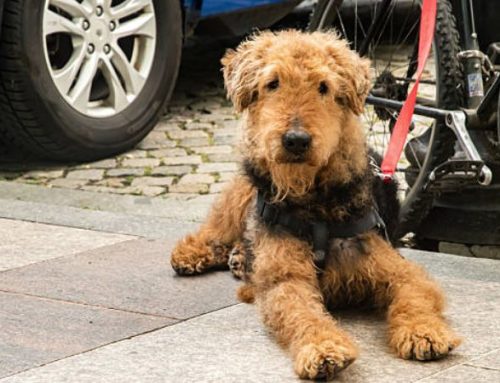The Akbash is a majestic and ancient breed that hails from the rugged hills of western Turkey, where it has stood as a loyal protector of livestock for centuries.
With its striking white coat and unwavering guardianship instincts, the Akbash combines elegance and strength, making it a standout in the world of livestock guardian dogs. If you’re curious about this noble breed’s size, temperament, lifespan, and more, keep reading for everything you need to know about the Akbash dog.
History and Origin of the Akbash Dog
The Akbash, whose name translates from Turkish as “white head,” is a centuries-old livestock guardian dog from western Anatolia, Turkey. Bred to protect flocks from predators such as wolves and bears, this breed has long been prized for its courage, intelligence, and independent nature. Unlike herding breeds, Akbash dogs do not move or manage livestock—they focus entirely on defending the animals under their care.
Physically, the Akbash combines the power of Mastiffs with the agility of Gazehounds, making it both a formidable and fast-acting protector. Its large, muscular body allows it to confront predators, while its keen senses enable it to detect threats from a distance. The breed’s signature white coat not only provides camouflage among sheep but also allows shepherds to distinguish the dog from potential threats, even at night.
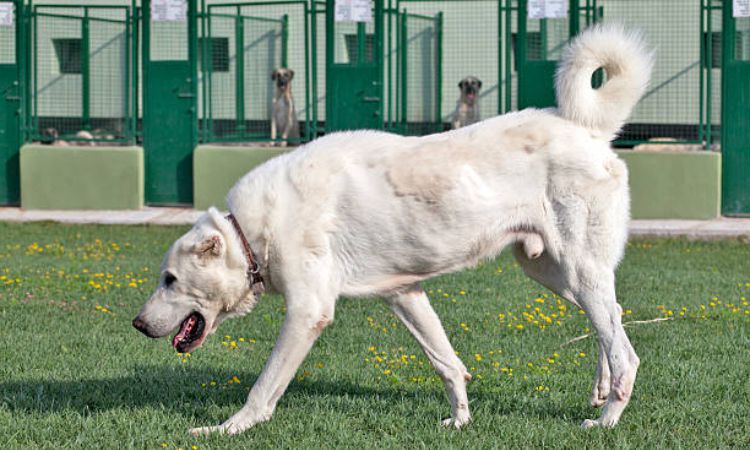
Modern recognition of the Akbash came in the late 20th and early 21st centuries. The United Kennel Club (UKC) officially recognized the breed in 1998, while the Turkish Ministry of Agriculture and Rural Affairs acknowledged it as a native Turkish breed in 2006. Despite its international recognition, the Akbash remains relatively rare outside Turkey, treasured primarily for its traditional role as a dependable flock guardian.
Akbash Dog Size and Weight
The Akbash Dog is a large, powerful guardian breed built for endurance, speed, and strength. Its athletic frame combines the solid build of a Mastiff with the agility of a sighthound, allowing it to protect flocks across rugged Anatolian terrain.
Male Akbash dogs typically stand between 30 and 33 inches (76–85 cm) at the shoulder and weigh around 100 to 140 pounds (45–65 kg). Females are slightly smaller, measuring 28 to 31 inches (71–79 cm) in height and weighing 80 to 120 pounds (36–55 kg). Despite their substantial size, Akbash dogs are surprisingly agile and fast, capable of quick bursts of speed when guarding livestock or deterring predators.
Their build is balanced and muscular without being bulky — a reflection of their purpose as long-distance patrollers who could move swiftly across open land. A slight arch in the back often indicates their athletic ability, while their strong legs and deep chest give them both power and stamina.
Akbash Dog Temperament and Personality
Temperament
Akbash dogs are known for their calm and observant nature. They prefer to assess situations quietly before acting, which makes them excellent watchdogs. They’re highly territorial and can be suspicious of strangers, both human and animal, which is part of their guardian instinct. When a threat appears, the Akbash reacts with confidence and courage rather than fear or hesitation.
Despite their serious demeanor, Akbash dogs are also loyal and devoted to their families. They form strong emotional bonds with their owners and will instinctively protect them. However, they are not overly affectionate or playful like some companion breeds — their love is shown through loyalty and vigilance rather than constant physical affection.
Personality
The Akbash’s personality combines dignity, intelligence, and independence. They are thinkers — capable of making quick decisions when guarding livestock or protecting their home. Because of this independence, they may appear stubborn or aloof during training, so consistent, positive reinforcement from a confident owner is essential.
With children and familiar pets, Akbash dogs can be gentle and patient, but early socialization is crucial. They don’t tolerate rough play or unfamiliar animals entering their territory. When properly socialized, however, they can coexist peacefully with other dogs and livestock.
Overall, the Akbash’s temperament makes it best suited for experienced dog owners who understand large guardian breeds. They thrive in environments where they have space to roam and a job to do — whether that’s guarding a farm or protecting a family home.
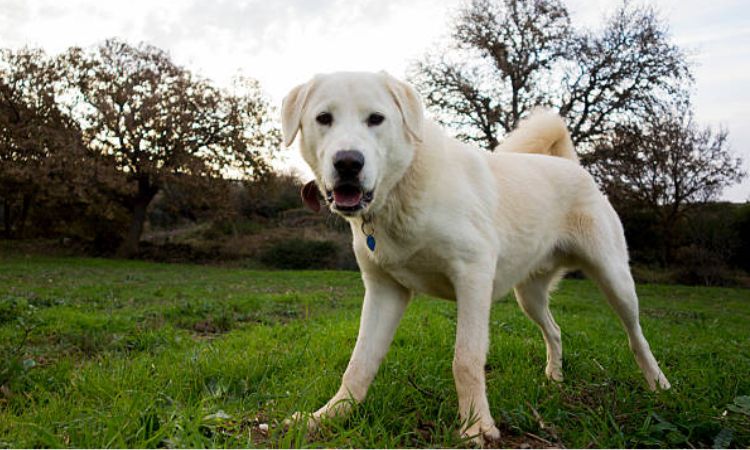
Health and Lifespan
The Akbash is generally a healthy and resilient breed with a lifespan of 10 to 12 years, typical for large guardian dogs. However, due to their size and genetics, they are prone to certain health issues that responsible owners should monitor closely. Regular veterinary checkups, balanced nutrition, and appropriate exercise play a major role in maintaining their long-term health and quality of life.
Major Health Concerns
Hip and Elbow Dysplasia
Like many large breeds, the Akbash can develop hip or elbow dysplasia — joint malformations that lead to pain, stiffness, and reduced mobility. Responsible breeders screen for these conditions, and maintaining a healthy weight combined with moderate, non-strenuous exercise can help reduce the risk.
Bloat (Gastric Dilatation-Volvulus or GDV)
Bloat is a life-threatening emergency where the stomach fills with gas and twists, cutting off blood flow. Deep-chested breeds like the Akbash are particularly vulnerable. Feeding smaller, more frequent meals, avoiding vigorous activity right after eating, and using slow-feeder bowls can help lower the risk.
Hypothyroidism
This endocrine disorder occurs when the thyroid gland fails to produce enough hormones, leading to symptoms like weight gain, hair loss, lethargy, and intolerance to cold. It is typically managed with lifelong medication and routine blood tests to monitor hormone levels.
Cardiomyopathy (Heart Condition)
Dilated cardiomyopathy (DCM) is a heart disease that weakens the heart muscle, reducing its ability to pump blood effectively. Early symptoms include coughing, fatigue, and difficulty breathing. Regular heart screenings and a diet rich in essential nutrients like taurine can help support heart health.
Akbash Dog Price and Cost of Ownership
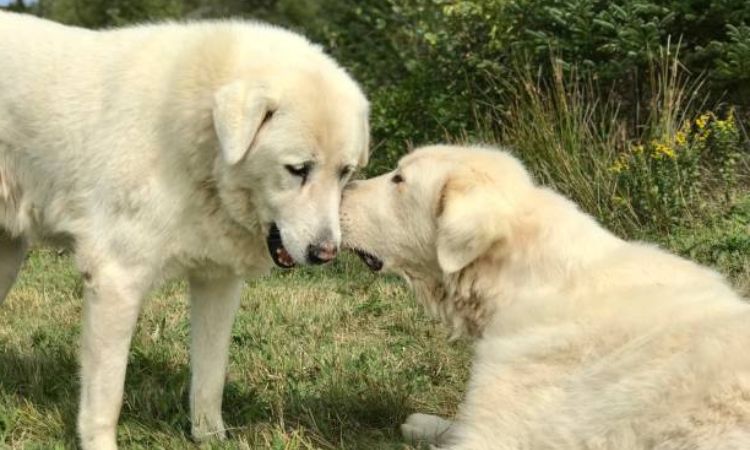
Akbash Puppy Price
An Akbash puppy typically costs between $1,000 and $2,500 when purchased from a reputable breeder. Some breeders may price their puppies around $1,250, depending on pedigree, health screenings, and early training. Since the Akbash is still considered a relatively rare breed outside Turkey, its price can vary significantly by location and breeder reputation.
Initial Setup Costs
Beyond the purchase price, new owners should budget around $400–$800 for initial setup costs. This includes vaccinations, spaying or neutering, microchipping, and basic supplies such as a crate, leash, collar, toys, and quality dog food. Setting up a secure outdoor space or fencing may also be necessary for such a large guardian breed, potentially adding to the initial investment.
Long-Term Costs
Owning an Akbash comes with ongoing responsibilities that can average $1,000–$2,000 per year. Key expenses include:
- Food: High-quality large-breed diets to maintain muscle health and joint strength.
- Veterinary Care: Annual exams, vaccinations, flea/tick prevention, and potential treatment for conditions like hip dysplasia or hypothyroidism.
- Pet Insurance: Optional but recommended, typically costing $30–$60 per month.
- Training and Socialization: Professional obedience or livestock guardian training may range from $200–$800, depending on the level of instruction.
Adopting an Akbash from a rescue organization can significantly lower upfront costs, usually between $50 and $300, covering basic health checks and vaccinations. However, due to the breed’s rarity, finding one in a shelter may require patience and research.
Grooming and Care
Coat Care
Akbash dogs come in medium to long coat varieties, both featuring a dense undercoat and a coarse outer layer that provides insulation and protection. Brush your dog at least once a week using a slicker brush or undercoat rake to remove loose fur and reduce shedding. During the spring and fall shedding seasons, daily brushing may be necessary to keep the coat under control. Regular grooming not only keeps their fur clean but also helps you check for skin issues, ticks, or matting behind the ears and legs.
Bathing should be done every 4–6 weeks or as needed, depending on how dirty they get. Because their coat naturally repels dirt and debris, over-bathing can strip the oils that help maintain coat health. Always use a gentle, dog-safe shampoo to avoid skin irritation.
Ears, Eyes, and Nails
Check and clean the Akbash’s ears weekly to prevent infections—especially if your dog spends time outdoors or around livestock. Use a vet-approved ear cleaner and cotton pad, never cotton swabs. Their eyes should also be inspected regularly for redness or discharge, wiping gently with a damp cloth if necessary.
Trim their nails once or twice a month to prevent overgrowth and discomfort, and brush their teeth daily with dog-safe toothpaste to promote good oral health.
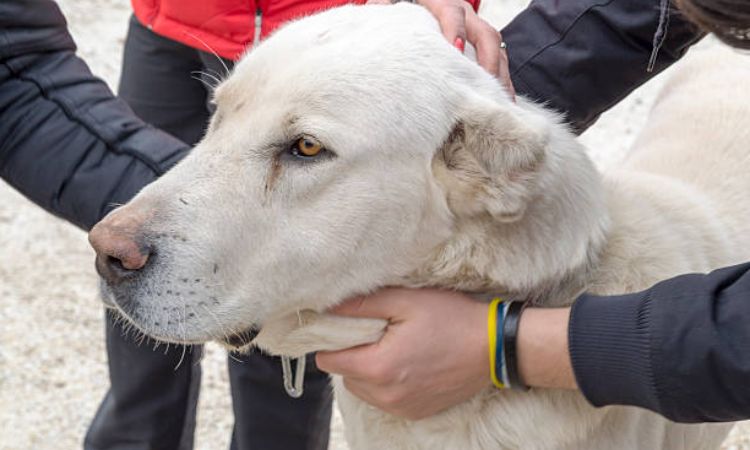
Exercise Requirements
Although large and athletic, the Akbash isn’t a high-energy breed. They were bred to observe and protect, not to chase or herd, so their exercise needs are moderate. Aim for at least an hour of daily activity, such as walking, light jogging, or free roaming in a secure yard. They thrive best in open environments where they can move freely and maintain a sense of purpose. Mental stimulation—like scent games or puzzle toys—helps prevent boredom and reinforces their independence constructively.
Living Environment
This breed is not ideal for apartment living. Akbash dogs prefer large spaces or rural settings where they can patrol and stay mentally engaged. Their protective instincts make them excellent outdoor guardians, though they should still spend time indoors bonding with their family. Because of their independence, they do best with confident owners who can set clear boundaries and provide consistent structure.
Training and Socialization
Start training and socializing your Akbash early. Their intelligent yet stubborn temperament means they learn quickly but may resist repetitive or forceful training. Use positive reinforcement methods like praise, treats, and consistency. Early exposure to different people, animals, and environments helps reduce overprotectiveness and makes them more adaptable in social settings.
The Akbash is more than just a striking white guardian—it’s a breed defined by courage, intelligence, and quiet devotion. For experienced owners who appreciate a strong, independent dog with a deep sense of purpose, the Akbash offers a loyal companion and an exceptional protector. To learn more about their size, temperament, health, and cost of ownership, explore the full Akbash Dog Guide.






